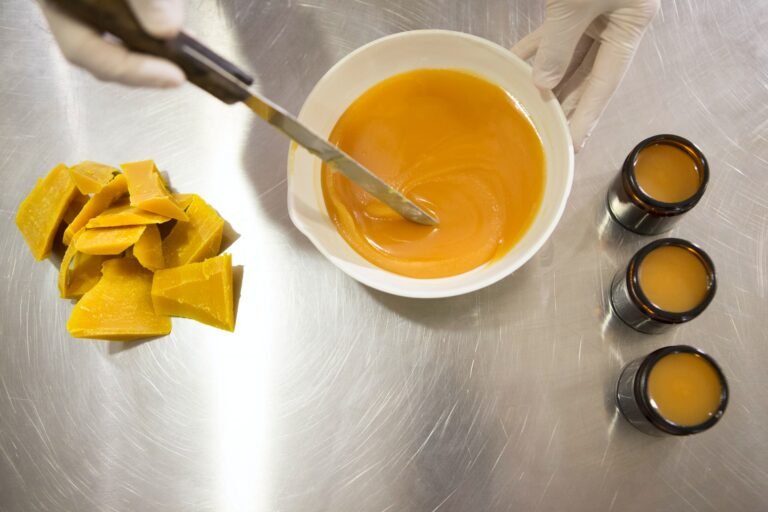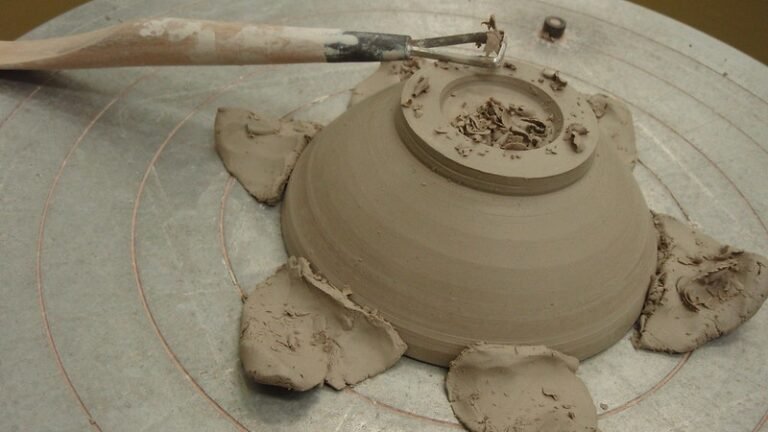How To Identify Pottery With No Markings – Easy Tips
Marks are important in pottery for identification and to determine its place and year of production. But where do you need to look, which details are important? How do you identify pottery without marks on them? In this article, we will discuss how to identify pottery with no markings.
Unmarked pottery can be identified by the size, weight, color, and flowers on the piece. Each of these requires a proper examination to identify even if it’s unmarked. Also, consult the service of a professional in the field who can help you identify the piece.
How To Identify Unmarked Pottery?
Pottery with no mark for identification can be identified using the following methods. There are several methods used for identification from the glaze, to the size and also the color of the clay. Each of these parameters, when checked properly, can help identify unmarked pottery.
Identifying By Size
Certain pottery is characterized by its size as a result of the common size from a particular location over some time like American pottery for example which is, in general, thick and heavy.
Identification By Color
Pottery can be identified by the color of the clay used in making it. This can be done by checking the bottom of the piece to see the unglazed area and determine the color of the Clay used in making it. Certain colors are peculiar to different countries of origin. Colors such as red clay are commonly associated with Frankoma(Founded in Oklahoma), yellow to pink indicates that it can be Shawnee and Hull, two of the major production companies in the early 20th century, or beige clay from Dryden (Kansas).

How Can You Tell If Your Ceramics Are Antiques
To determine if your ceramics are antique or original faux, this can be achieved by turning it over, to examine the bottom of the piece. This allows you to see the type of clay that piece is made of. Most faux antiques are usually disguised as antique by painting the bottom brown, trying to make it looks older than it really is. You can recognize the original antique by using a clean cloth or towel to wipe the bottom of the piece thoroughly. If it appears dust and dirt, then it’s an antique. If otherwise then it’s a disguised faux.
Examining the painting on the old pot can provide information in identifying the piece. Some pieces with flowers like willow or river can be associated with certain potters from China and can be confirmed by searching online for other works of the same potter.
Even though some pieces come with no name or country, checking the bottom sometimes gives information using other marks found at the bottom of the piece.
After you have done all those steps, you can consult your local pottery expert for more information.
How To Identify Unmarked China
Sometimes, old China pottery has no marks as a result of worn condition but it can be very valuable. China pieces can be identified using different parameters such as shape and pattern based on the period it was produced. There are three types of porcelain commonly known as “china porcelain”: Bone china, hard-paste porcelain, and soft-paste porcelain. You can also identify China pieces by searching or comparing the pattern since most products have a unique pattern or design specific to them. You can check them on the web from various pottery identification sites.
Although some pieces have a similar pattern, identify a set with a similar borderline, shape, pattern, etc., examine the glaze on the pieces. It should be smooth all through with no breaks or crack. It should be leveled perfectly ensuring it is balanced when placed on a flat surface. You also identify a china piece based on historic trends. Certain patterns are common with the bright design and glide in gold, and the pieces are usually ivory, white, or cream-colored.
How To Identify Unmarked Bone China
Bone china is made from animal bone ash, making about 25% of its component. Besides the mixture of clay and grounded stone, it produces a strong and sturdy piece, but yet lightweight. It is highly resilient and also translucent. Bone china is expensive due to the laborious process involved in its production. Also, it can be identified by simply holding up to the bright light and put your finger underneath the piece. As the material is translucent you will see the silhouette of your fingers. You can also identify bone china by examining the color, it is usually ivory as opposed to Chinese porcelain which is usually white. You can identify bone china by using your fingernail to flick the edge of the piece producing a distinct sound or ring peculiar to bone china. Though this test requires practice to identify the sound.
How To Identify Unmarked Chinese Porcelain
Chinese porcelain is chinaware which has been subjected to high temperature and has additional constituents in the production. It is made of kaolin, a special type of clay in China. It is stronger than ordinary china, opaque, and usually light, it can also be identified by tapping the piece. Chinese porcelain is often used for a singular purpose with utilitarian design except those made into a vase for decorations with simple design.
The shape is also an important factor in the identification of Chinese porcelain. The first parameter to consider during identification is the shape, as some shapes were not known in the dynasty porcelain originated from, therefore such unknown shapes during that era are not possible to be porcelain.
If the piece passes the first test, the next test is the color palette test. Just like the shape, certain colors were not available during this period, the most commonly used color then was blue dye. The presence of unknown colors at the time makes the piece be immediately dismissed as porcelain. Also, check the bottom and foot of the piece to determine the age and era when it was produced. Most experts are likely to identify specific features peculiar to certain dynasties.
Another thing to consider is the glazing technique used for the piece. Porcelain china is made from clay and the technique used in mixing the clay is highly refined. Any deviation from that is a sign that it’s not Chinese porcelain.
So, whenever you find a piece of pottery without visible marks, make sure to check all the other elements mentioned because you never know if your vase or plate is worth it and sometimes can be pure gold.







